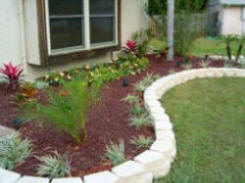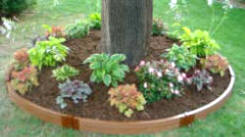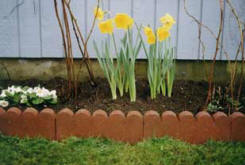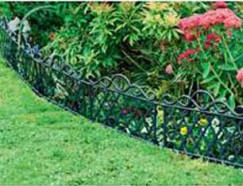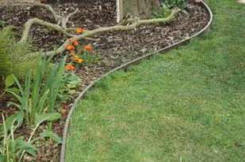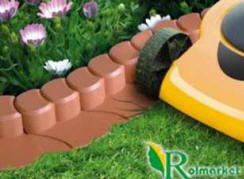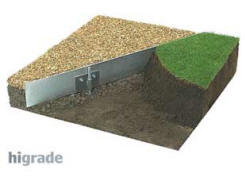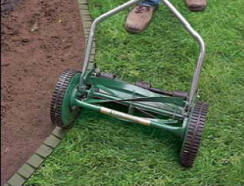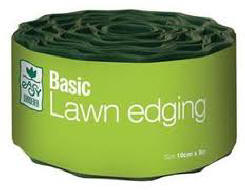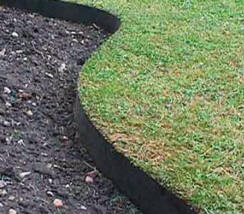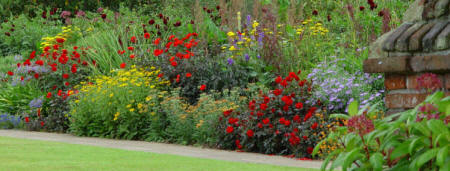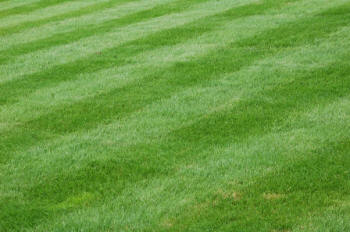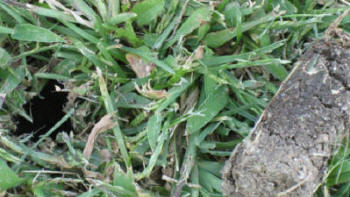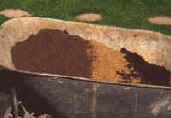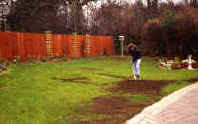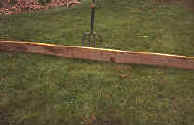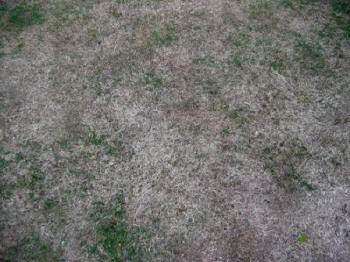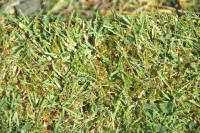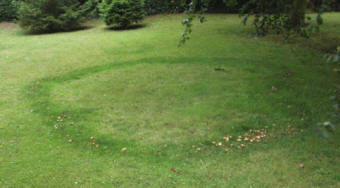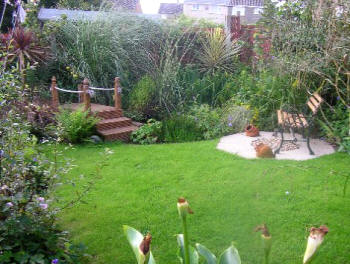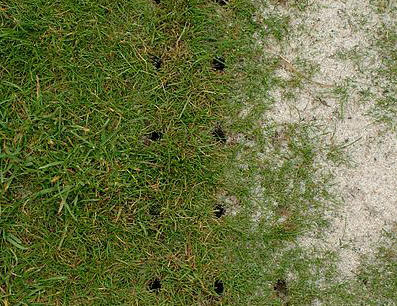It is not normally a good idea to simply end your lawn at the
boundary of your garden edge; against a wall
or fence. This will inevitably lead to either additional maintenance
work - or an untidy finish, where the mower blades cannot quite get to the edges of the turf at the
garden border edge.
There are many different ideas, ways and materials with which to edge
the lawn. It is nearly always best if the grass border
garden edging of the lawn is taken into account at the design and
construction stage! This does not always happen, so you are then left
with the frustrating task of finding suitable ideas on how edge to to
the lawn. This is where we aim to help!
The Lily Pond at RHS Wisley Garden in UK. The lawn has a natural edge,
and is nicely positioned slightly above the level of the paving - which
allows for easy lawn mowing.
The reasons for lawn border edging are
varied. Aesthetic appeal, ease of maintenance, safety and long term
stability of the lawn being some of them.
The importance to gardeners of
lawn edging is such that huge areas of garden center displays are set
aside for assorted
garden edging, and some companies thrive - or
at lease survive with patented lawn
or garden edging their main - or even sole - product. Many
articles have been written giving different ideas on lawn edging. This
is one of them - but based upon experience rather than suppliers' press
releases.
Sometimes, it is not the grass border that requires and edge, but
rather, some aspect of the garden - usually a plant border
edge - that need restraining. Shrubs and Herbaceous borders in
particular can be a problem where they are set next to a lawn.
Whatever the problem, there will invariably be a simple solution
(that might take a considerable amount of work) which will give you a
satisfactory edge to your lawn - formal or informal, straight or curved.
Ease of mowing will often be a first consideration, where the
existing layout/machine does not allow for clean cutting to the edge of
the lawn - resulting in the laborious task of rigging up the strimmer to
lop off those untidy seed stalks or tufts of uncut grass.


